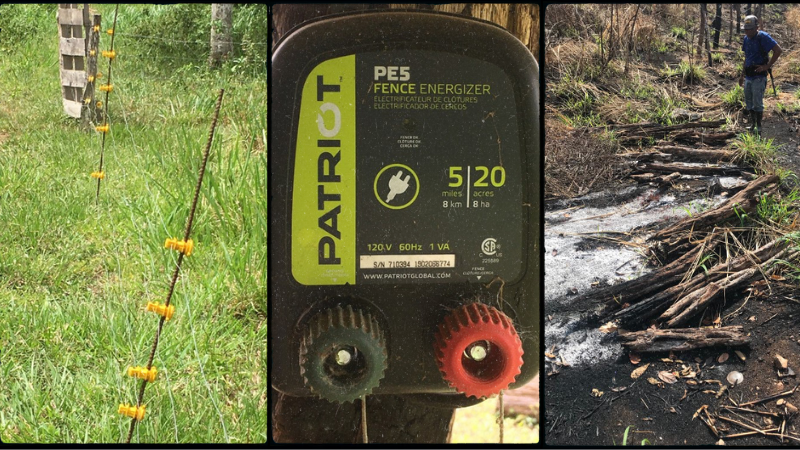by Cayo Rural Farmers Alliance – CRFA
Description
54.7 % and 45.3 % of Belize’s population is rural and urban respectively. In Cayo, 47 % of the population is composed of rural families, although most agricultural enterprises are limited to men. Even though a significant percentage of the population is involved in agriculture (17.8%), there is a high unemployment rate of 15 % and also the poverty rate is very high. The agriculture enterprises include beef cattle, dairy cattle, sheep, pigs, poultry, citrus, sugar cane, grains and vegetable crops.
The major challenges faced by farmers include:
- Drought of 2019 to present.
- Forest fires.
- Lack of extension services for livestock farmers.
- Lack of vets specialized in sheep and goats.
- Lack of organization.
- Covid-19-19 has reduced consumer purchasing power.
- High reliance on imported farm inputs.
Farmers are coping with some of the challenges by:
- Downsizing production: many farmers have been forced to sell animals with the consequent fall of cattle prices by 40-60 % in the domestic market. Most beef cattle farmers who relied entirely on the export market to Guatemala are stockpiling cattle and fear droughts and bankruptcy.
- Diversifying production: farmers who supplemented income with tourism are selling off horses and diversifying into sheeps. Many small farmers sold their entire sheep flock because the price dropped from $ 3.00/lb. to below $ 2.00/lb. (live weight). Moreover, a number of new farmers are introducing sheeps into their farms as a result of cheaper prices. However, the concern is that many new farmers are inexperienced.
- Implementing best practices: farmers are making silage and experimenting with making their own pellet feeds. Farmers are planting different forage species and are also baling hay to feed animals in confinement.
- Investing in cheaper solutions: cheap electric fence chargers are easy to install and improve pasture use efficiency.
- Developing marketing techniques.
- Changing their animal genetics: some are culling Dorper genes and introducing purebred BBB sires (heat tolerant and offer better Haemonchus contortus resistance) available from the Sheep and Goat Genetic Project at the Taiwan Technical Mission in Belize.
- Investing in water harvesting: some have heavily invested in building ponds, but the drought has thus far prevented any rainwater harvesting. Most farmers still resort to harvesting water from the river. This is a time consuming and expensive task.
- Organizing: a group of livestock and crop farmers formed the CRFA Association.
Results
- Increased forage use efficiency.
- Animals under sheds better cope with heat stress and reduce operation costs – primarily for small ruminants.
- Technical workshop on sheep production.
- Taiwanese Technical mission in Belize grant: drought relief fund for sheep and goat farmers.
- Farmer to farmer technical and farm input support.
Climate smartness*
Most of the practices presented in this project are framed within the concept of Climate-Smart Agriculture (CSA) since they meet at least two of the three pillars, which are adaptation, mitigation, and increase of productivity. Several of the practices promoted in the project are identified within the global evaluation of Climate-Smart Agriculture carried out by Sova et al., 2018.
With respect to adaptation, key practices are productive diversification, the establishment of water reservoirs, implementation of improved pastures, and the use of alternative forages such as silage. These practices allow improving production in dry seasons through adaptation capacity increase of the livestock systems, and better management of climate risks. Likewise, the new breeds’ introduction guarantees enhanced milk and meat production during dry spells, and periods of high temperature and relative humidity.
Several practices of the project also contribute to greenhouse gases reduction, given that by improving the quality of animal feed, the methane emission by-product is reduced. In addition, improved grasslands management increases soil carbon sequestration.
It is recommended for this project to create strategies to strengthen the knowledge of the farmers as regards access to and use of agro-climate information. This kind of information may enable them to make short-term decisions that are linked to climate variability, such as diseases and weed management in paddocks. Likewise, it is recommended to assess the implementation of additional practices recommended by CIAT and the World Bank, 2018.
*This is done in the framework of climate-smart agriculture (CSA) approach. Climate-smartness in agriculture means understanding impacts of climate change and variability along with the agricultural activity, which includes the planning of what crop to plant, when to plant, what variety to plant and what type of management practices are needed to reduce the impact on the environment (e.g. emissions reduction), maintain or increase productivity (e.g. yields) while increasing resilience and improving livelihoods.


